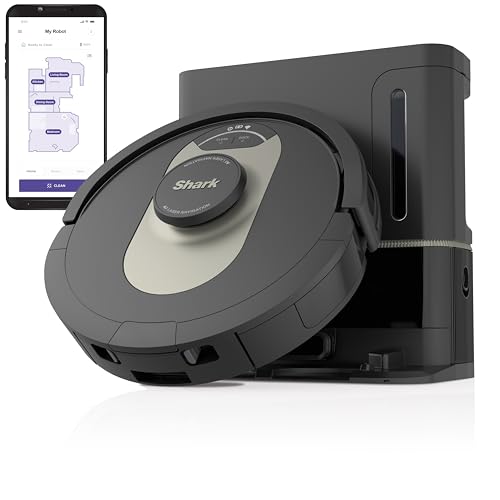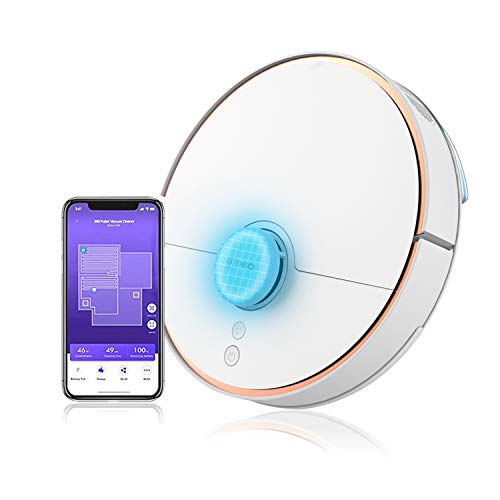 Robot Vacuum and Mop
Robot Vacuum and Mop - Hands-Free Cleaning Made Easy
Think about this two-in-one cleaner if you want a cleaner that does all. It vacuums low-pile and medium-pile carpets for floors and the app lets you create mop-free areas and to adjust cleaning schedules and modes of operation.

Look for models that can determine the kind of flooring they're on, take out their own water tanks and dirt and stay clear of obstacles such as socks, chargers for phones and pet hair. Find out how easy the unit is to install.
Self-Emptying
People are always looking for ways of lessening their workloads as the world becomes frantic and hectic. Robot vacuums and mop are among the most effective tools available to help you. These machines can vacuum dirt, pet hair and crumbs while simultaneously cleaning the floors. You can even make use of a smartphone or voice assistant to control them with pre-programmed schedules as well as specific room designations.
Self-emptying models are a great time-saver for both user and the machine. You don't need to empty the dustbin every time you clean. This will help you save time and allow your robot to clean the entire house more frequently.
If you're thinking of the possibility of a robot that self-empties it, make sure to verify the size of the bin, as it can quickly fill up if it is regularly used. You should also ensure that the system doesn't overfill and cause a clog that will prevent the robot from emptying it fully.
The self-emptying feature works by removing the internal dustbin from the machine and putting it in larger storage containers -Think of it as the bag that comes with a traditional vacuum cleaner -which can be empty every two or three times. It's a feature that is premium and makes these robots well worth the extra cost over regular models.
Some models wash and dry dirty pads automatically after each use. Some models have a dock that takes care of the entire job and you only have to empty it twice or once per year.
If you're looking for a robot that does both, check out this top-
best rated robot vacuum option from Roborock. The RockDock S7 MaxV Ultra is a vacuum and mop that comes with docks that take care of all maintenance. You don't have to empty the tanks manually and you can also schedule the unit or start it with on-device controls and voice assistants such as Alexa and Google Assistant. It has boundary strips that keep it from wandering into other areas of your home even if you don't want it to.
Object Avoidance
The top robot vacuums feature the ability to avoid objects. This allows the machine to navigate around furniture legs and other toys. This is essential for busy households with kids and pets, as if the robot bumps into these items they'll likely stop or break it.
The method is typically built around a single or couple of sensors situated close to the shock-absorbing bumpers of the vacuum. When the sensors detect an obstacle, the robot will automatically rotate and reorient itself until it can find a clear path. Certain models utilize lidar technology that uses lasers to measure the distance between the robots and other objects. This allows the robot to create a real-time map of its surroundings and helps it move through your home with greater effectiveness.
Other robovacs, that do not use lidar technology, are designed to detect obstacles using cameras that use a monocular or binocular sight. These systems are effective in ideal lighting conditions, but don't work so well in low-light conditions or with items that have similar to their surroundings. A robot with monocular vision will be unable to recognize shoes and cables.
Some advanced robot vacs can be more than just avoiding obstacles, which is the reason they're also referred to as smart vacuums. They can create a virtual map of your home's layout, and let you send them to specific rooms or areas using the app. They can even remember where they've already cleaned. This can cut down on the time spent cleaning and ensure that your home is well cleaned.
A lot of the most advanced robotic vacuums and mops switch between different types of flooring. Certain robot vacuums and mops automatically recognize the flooring type in a certain room and adjust suction and brush functions to match. Some even allow switching from carpet to hard flooring without affecting suction power.
Regardless of the flooring type regardless of the flooring type, all smart vacuums and mops should be equipped with some sort of obstacle avoidance. These features ensure that the appliances aren't caught in a web of wires, which could cause them lose suction. Some models have a checklist of objects they know about, such as socks, shoes, and pet waste. The
best rated robot mop models can identify these items and determine their dimensions, distance, and how to avoid them without getting into it.
Floor Mapping
Most robot vacuums are equipped with sensors that can detect objects. If an object -- like furniture legs or a randomly toy is thrown in the way the sensor will trigger that tells the vacuum to steer away from the obstacle and toward a cleaner part of the floor. However, these sensors are not 100% reliable. For instance, the Roomba 900 Series was able to avoid our shoelaces as well as wired headphones, but it accidentally got an USB cord. We suggest removing objects out of the robot’s path before letting it move through your home.
A lot of the mopping and vacuum robots we've tested on The Spruce come with an application that allows you to save maps, create schedules, choose cleaning modes and monitor your robot's progress. The most effective apps have features that will make your robot more efficient. They are user-friendly and easy to use.
App integration allows you to keep an eye on the water tank and dirty pads on your robot. Look for models that let you check the level of filling in the tank and how much the pad is wet, and when it's time to change the cloth. You can create a routine that automatically changes the pad when wet, to stop mildewy odors from building up.
The mapping feature is important for robot vacuums which work across multiple floors. It lets the robots create an outline of your home that they can use to navigate and clean different areas. Some robots employ sensors in combination with artificial intelligence to create these maps. For example, iRobot's Vacuuming Mapping feature makes use of multiple sensors to scan a room, including walls and corners, to find out how far it can travel before bumping into obstacles or hitting furniture.
Other robots such as the Ecovacs Deebot X1 -OMNI or the Roborock S7 MaxV Ultra use optical sensors to determine the location of walls. They can then apply a mapping algorithm or follow the edges of furniture to figure out the most efficient way for each room.
Mopping Sets
Robot vacuums work automatically and you do nothing more than pressing an icon on a remote, or within an app to have them clean a room. You can also schedule your schedule using voice commands. This is an excellent feature for busy families who need their robot vacuum cleaners to complete their chores at the same time each day.
Many robot mops feature microfibre pads, which are hydrated by water tanks at the base. These are able to be used multiple times before they require to be washed or replaced. Look for models that can adjust the amount of water dispensed to fit different types of floors. You should also take into consideration the size of your tank, its ability to switch between dry and dried mopping, and the length of time that a robotic mop can last on a single charge.
The
best robot mop cleaner robot mops are able to effectively and quickly clean floors, even under tables and around obstacles. They're not perfect however, and can struggle to climb and descend steps or over ledges that divide rooms. They can leave streaks on tiles or timber, particularly in sunlight.
A good quality
robot vacuum and mop must include sensors that can recognize and avoid carpet. This is crucial if your home has different types of flooring, as the robot cleaner will not be sucked into or over carpets. It should be able to recognize other objects that might interfere with the cleaning, such as cords and tassels. This will enable you to establish "no-go zones" which will stop the robot from entering these areas.
Most of the robot cleaners we test in our CHOICE lab come with a smart app integration, which allows you to save maps of your home as well as schedule cleaning times and select cleaning options. You can also set up virtual barriers that keep your robot out of certain areas and receive (sometimes humorous) error alerts when the device has a problem. Some applications are more user-friendly than others, and a few provide a live webcam for monitoring of your robot.



